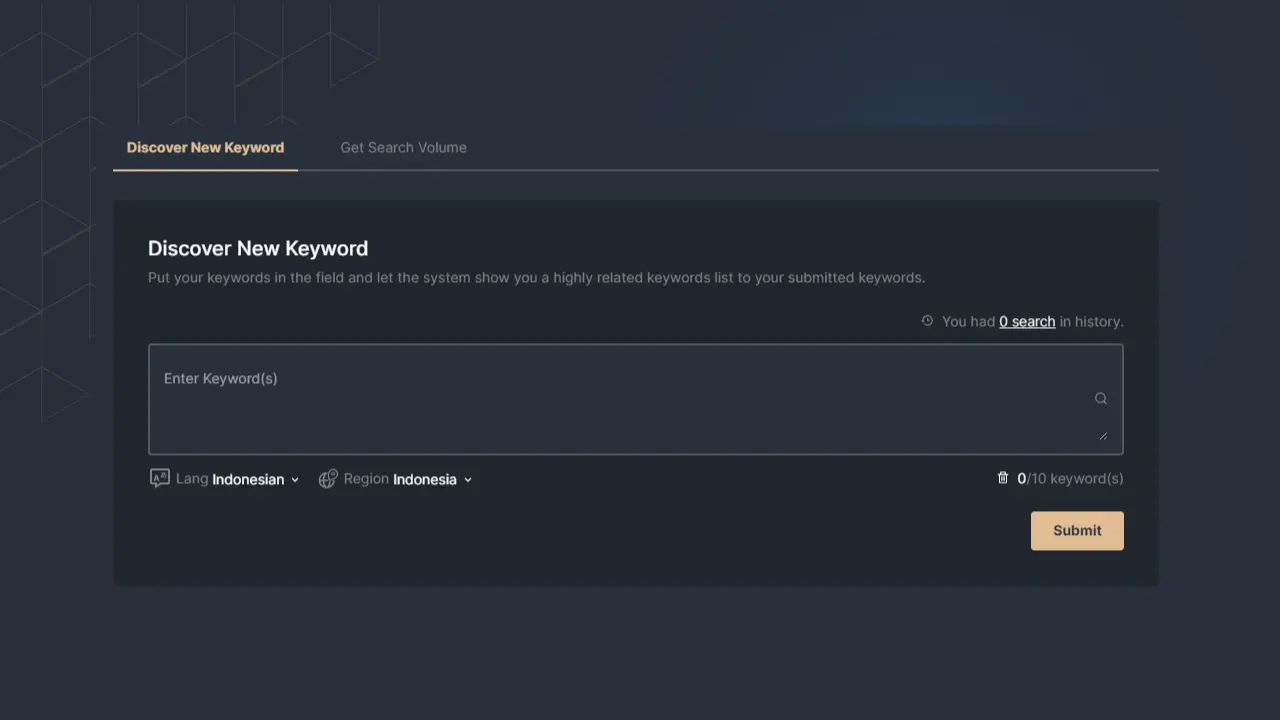Keywords are phrases or words that people enter into search engines to find what they're looking for. However, not all keywords are created equal. Some types of keywords may be more effective than others in reaching your target audience and achieving your SEO goals.
In this article, we'll explore the different keywords types in SEO and provide tips on how to use them effectively to optimize your website's content
Keyword Types in SEO
Below are listed keyword types in SEO that are commonly used to achieve certain SEO goals such as higher ranking, traffic, and even brand awareness. Here is the explanation of each keyword type.

Picture 1: Illustration of different types of keywords in SEO
Short-Tail Keywords
Short-tail keywords, also known as “head keywords,” are brief and generic phrases consisting of one or two words. They are broad terms that are commonly searched for by internet users. Examples of short-tail keywords include “shoes” or “car insurance.”
Here is some knowledge about this type of keyword:
Role: Short-tail keywords are essential for increasing your website’s visibility in search SERPs. They are often targeted by businesses with a broad target audience and high competition. By including short-tail keywords in your website’s content, you can attract a larger volume of traffic to your site.
Advantage: The primary advantage of using short-tail keywords is that they have high search volume, which can help drive significant traffic to your website. They are also easy to include in your content, and their use can improve the overall relevance of your website.
Disadvantage: One of the main disadvantages of using short-tail keywords is their high competition. Since these keywords are so broad, it can be challenging to rank for them in search results. Additionally, the traffic generated by short-tail keywords may not always be relevant to your website’s specific niche or target audience.
Long-Tail Keywords
Long-tail keywords consist of three or more words and can be more specific. They are more targeted phrases that are less commonly searched for than short-tail keywords. Examples of long-tail keywords are “women’s running shoes for flat feet” or “affordable car insurance for college students.”
Role: Long-tail keywords are useful for targeting a specific niche audience. They are often used by businesses with a narrow target audience. Using long-tail keywords in your website’s content can attract a smaller volume of highly relevant traffic to your site.
Advantage: The main advantage of using long-tail keywords is their lower competition, making it easier to rank in search results. They are also more specific, which means the traffic generated by long-tail keywords is more likely to be relevant to your website’s niche or target audience.
Disadvantage: The main disadvantage of using long-tail keywords is their lower search volume. It means they may not generate as much traffic to your website as short-tail keywords. Not to mention, creating content that targets long-tail keywords can be more challenging, as you need to be more specific and cater to a smaller audience.
Branded Keywords
Branded keywords are phrases that include the name of a specific brand or business. For example, "Apple iPhone" is a branded keyword for the Apple company.
Role: Branded keywords play a vital role in SEO for businesses with well-known brands. These keywords help to drive traffic to the website when users search for their brand name. Additionally, branded keywords can help to establish brand awareness and brand loyalty among potential customers.
Advantage: One of the key advantages of using branded keywords is that they typically have a high click-through rate (CTR). This is because users who search for a specific brand are often already familiar with the brand and are more likely to click on a relevant search result. Branded keywords are also often less competitive, making it easier for a business to rank for these keywords.
Disadvantage: One potential disadvantage of using branded keywords is that they may not attract new customers who are not yet familiar with the brand. Also, if a business relies too heavily on branded keywords, they may miss out on potential customers who are searching for more generic terms related to its products or services.
How to Use Them: To use branded keywords, businesses should ensure that their website is optimized for their brand name. This includes including their brand name in page titles, meta descriptions, and other key elements of their website. Additionally, businesses should consider using branded keywords in their paid search campaigns to drive even more targeted traffic to their website.
Non-Branded Keywords
Non-branded keywords are phrases that do not include a specific brand name. For example, "smartphone reviews" is a non-branded keyword that could be used by many different companies.
Role: Non-branded keywords are important for businesses that want to attract new customers who are not yet familiar with their brand. Using this keyword type in SEO can reach users who are searching for generic terms related to their products or services.
Advantage: The tangible advantage of using non-branded keywords is that they can help businesses reach a wider audience and attract new customers. Non-branded keywords are also often more targeted, making it easier for businesses to provide relevant content to their website visitors.
Disadvantage: However, using non-branded keywords can be more competitive, making it harder for a business to rank for these keywords.
How to Use Them: To effectively use non-branded keywords, businesses should conduct thorough keyword research to identify the most relevant and competitive keywords related to their products or services. Then, make high-quality content that will be useful to website visitors.
Geo-Targeted Keywords
Geo-targeted keywords are words/phrases that include a specific location, such as a city, state, or region. For example, "best pizza in Malang" is a geo-targeted keyword that includes the location of Malang.
Role: Geo-targeted keywords are needed for businesses that want to attract customers in a specific location. By using these keywords, businesses can optimize their website for local search and attract customers who are searching for products or services in their area.
Advantage: using geo-targeted keywords can help businesses attract highly targeted traffic to their website. This traffic is more likely to convert into customers because they are already looking for products or services in the same location as the business. Additionally, geo-targeted keywords are often less competitive, making it easier for a business to rank.
Disadvantage: using geo-targeted keywords may limit the reach of a business's website. If a business only uses geo-targeted keywords, it may miss out on potential customers who are searching for more generic terms related to its products or services.
Usage: Optimize the website content with local-based keywords, including page titles, meta descriptions, and other key elements. Additionally, consider using local listings and directories to further optimize the website for local search.
Intent-Based Keywords
Intent-based keywords are phrases that indicate the intent of the searcher. For example, "buy running shoes" is an intent-based keyword that indicates that the searcher is looking to make a purchase (transactional).
Role: To attract customers who are ready to make a purchase or take a specific action. By targeting these keywords, businesses can optimize their website for high-intent search queries and attract customers who are more likely to convert.
Advantage: Help businesses attract highly motivated and engaged customers to their websites. These customers are more likely to convert into sales or leads because they are already interested in the products or services offered by the business. Additionally, intent-based keywords are often less competitive than more generic keywords, making it easier for a business to rank for these keywords.
Disadvantage: It may not attract as much traffic to a business's website as more generic keywords. Not only that, but some intent-based keywords may be more difficult to rank for because they are highly competitive.
How to Use Them: First, identify the most relevant and competitive keywords related to your product or services Then, create high-quality content that targets these keywords and provides valuable information to potential customers.
Those are keyword types in SEO that you need to know including their roles, advantages, disadvantage, to how you can use them.
Keyword Research Tool
Those keyword types in SEO should be researched thoroughly so that you don’t invest in the wrong keywords. To do that, you will need an SEO tool that can accommodate this activity. You can use the Sequence Stats Keyword Ideas feature to conduct keyword research for your content.

Picture 2: Keyword Ideas feature in Sequence Stats
This feature is quite complete in showing the data you need. Thus, you will only need one SEO tool to track keyword performance and do research at the same time. You can register to enjoy all the features available.
If you need a free tool, go to Keyword Research Tool by Sequence where you don’t need to purchase anything.

Picture 3: Keyword Research Tool page by Sequence Stats
Even if this tool is available for free, the data presented is complete. Starting from the search volume, competition, CPC, YoY, and other valuable metrics to analyze.
Conclusion
In conclusion, understanding the different types of keywords in SEO is crucial for any business or SEO stakeholders. Each type of keyword serves a unique purpose and requires a tailored approach for effective optimization.
By knowing all of these keyword types and how to use them, businesses can create a comprehensive SEO strategy that targets their ideal customers